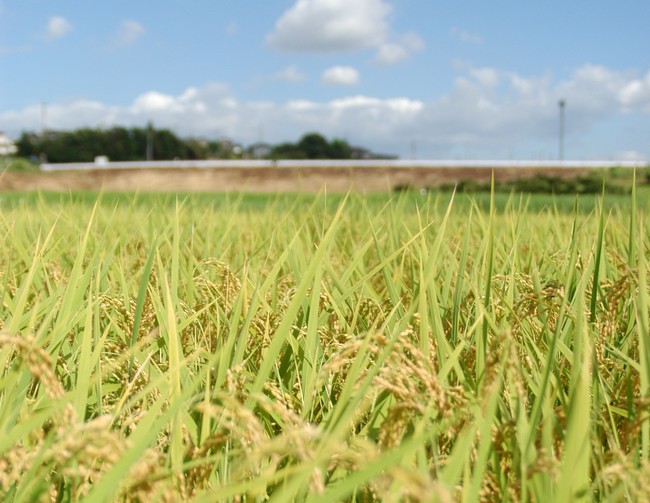From the UC Rice Blog :: August 23, 2023
* * * * * * * * * *
Pest Control Advisers (PCAs) and growers were very creative and timely in planning and applying products this year, and control was good in many fields. The two most widespread weed control problems that I noticed this year were the watergrass complex and sprangletop. We have widespread resistance, but control issues this year were likely also related to the wet spring, as well as colder temperatures which resulted in different emergence timings and weed growth patterns as compared to other years.
Propanil Usage and Over-Reliance as a Tool
Propanil is a powerful tool in our herbicide arsenal in California rice. It has wide-spectrum control, controlling many grass, sedge, and broadleaf species.

While we know we already have populations that are multiple herbicide resistant in both bulrush and smallflower, it is very likely that we may soon see this in watergrass populations. In fact, it is increasingly likely, as we are seeing double-propanil applications in many parts of the rice-growing region.
The propanil label lists several products that should not be applied with propanil, namely certain insecticides. The reason that these are put on the label is because in combination with propanil, they can overcome the rice plant's ability to metabolize propanil. When we utilize these products in combination with, or closely following propanil, there is a high risk of significant injury to the rice, including death of rice plants. Please make sure to follow the label, and do not apply these insecticides either as a tank-mix with propanil or soon after (refer to the label).
Alternative Cleanup Sprays (instead of double propanil)
Some alternative cleanup sprays (instead of the double-propanil spray) are suggested below. Keep in mind that these are not endorsements of these products, and not all combinations have not been tested on all weed populations, so efficacy is not guarante.
- Abolish + Regiment (watergrass and smallflower umbrella sedge control)
- Propanil + Loyant (watergrass, broadleaf and sedge control)
- Propanil + Shark (watergrass control). Worked very well in 2022 at one site—I am conducting further research this year. It caused significant phytotoxicity, but the rice recovered.
- Regiment followed by Propanil applied about 7 days apart (watergrass control). This caused significant phytotoxicity and grass control was not as good as some of the other treatments, but it is a good alternative treatment to double propanil.
Further research is being conducted at multiple sites this year, and results will be forthcoming later this year.
Other Management Methods
As weeds get tougher to control due to resistance, there are some things to keep in mind to maximize efficacy (including some Integrated Weed Management strategies).

- Using tank mixes of multiple products, as early as possible in the season
- Utilizing a stale seedbed on badly infested fields (Suppress or glyphosate)
- Applying multiple granular products early in the season (at the same time or in close succession)
- Utilizing pre-plant herbicides (Prowl or Abolish) to suppress early-germinating weeds
- Deep water at the beginning of the season will help to suppress grasses (watergrass, barnyardgrass, and sprangletop). The deeper, the better (at least 6 inches, but up to 10-12 inches will suppress more plants).
- Winter flooding with no fall tillage: this is a great way to reduce watergrass populations, as seeds are predated upon and will rot if left on the soil surface.
For assistance in implementing an alternative program, contact Whitney (wbrimdeforest@ucanr.edu).
Herbicide Resistance Testing
If you have large populations of weeds that survive until the end of the season, please get them tested, to ensure that you are using the most effective herbicides for your particular weed populations.
Please fill out the form (under the “Weeds” section at https://agronomy-rice.ucdavis.edu) for each weed seed sample (each field and/or species).
The following tips will ensure that you receive the best possible results:
- The best timing of collection is when the seed easily falls off the seed head by gentle agitation in a paper bag. Collecting seeds that don't easily fall off will make it difficult to germinate the seeds, resulting in poor or no results.
- For watergrass species, collection timing should be close to rice harvest (seeds should be brownish in color.)
- For sprangletop, timing will be earlier, in August or September (seeds will appear greenish.)
- For the sedges, timing may be as early as July, all the way through early September.
- Smallflower umbrella sedge seed is yellow, with brown hulls (looks like dust.)
- Bulrush (roughseed) seeds are black and have small hairs.
Seed should be collected from areas that you know have been sprayed with the suspected herbicide.
Collect seeds from multiple plants, and the amount should be at least a few handfuls of seed, to ensure sufficient quantity for testing.
Please do not collect seed from around field margins.
Allow seed to dry in the paper bag to prevent molding.
Bring the sample and form to your local UCCE Farm Advisor (Whitney Brim-DeForest, Luis Espino, or Michelle Leinfeld-Miles) or send/drop off samples at the CA Rice Experiment Station (RES) in Biggs, CA. If you need assistance in collection, please contact your Farm Advisor or PCA. Results should be emailed to you in March of 2024.
Visit our new website!
https://agronomy-rice.ucdavis.edu
Author - CE Rice and Wild Rice Advisor, Master Gardener Advisor, UC Integrated Pest Management Program Afilliate
